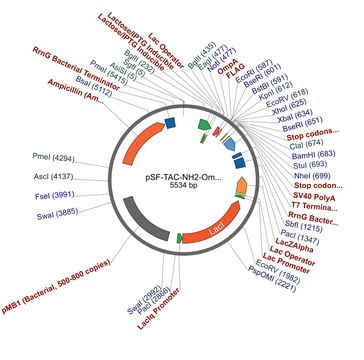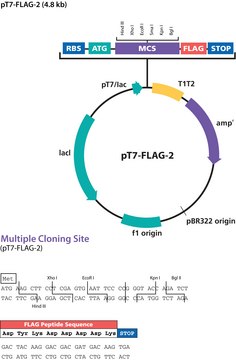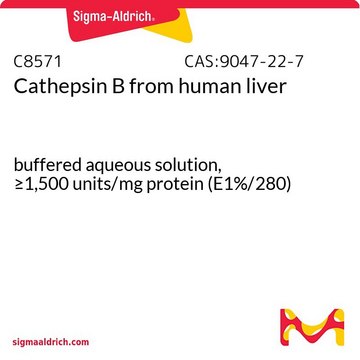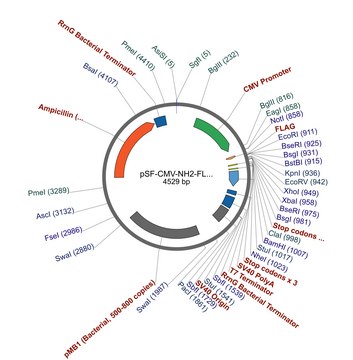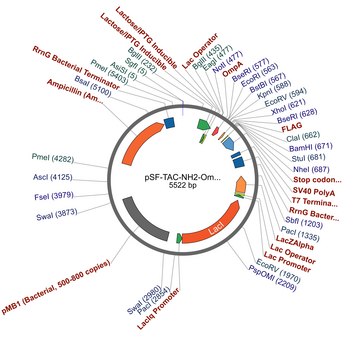E8408
pFLAG-CTC™ Expression Vector
Bacterial vector for cytoplasmic expression of C-terminal FLAG fusion proteins
About This Item
Recommended Products
tag
FLAG® tagged
grade
Molecular Biology
for molecular biology
form
buffered aqueous solution
shipped in
dry ice
storage temp.
−20°C
General description
C-terminal FLAG fusion proteins may be purified using Monoclonal ANTI-FLAG M2, Catalog Number F3165, and ANTI-FLAG M2 Affinity Gel, Catalog Number A2220.
The pFLAG-CTS-BAP Control Plasmid is a 6.7 kb vE. coli plasmid used for efficient and controlled periplasmic expression of C-terminal FLAG-BAP fusion protein.
Vector Maps and Sequences
Components
- pFLAG-CTC™ Expression Vector 10 μg (E5394) is supplied as 0.5 mg/ml in 10 mM Tris-HCl (pH 8.0) with 1 mM EDTA.
- pFLAG-CTS™-BAP Control Plasmid 1 μg (P7707) is supplied as 0.5 mg/ml in 10 mM Tris-HCl (pH 8.0) with 1 mM EDTA.
Principle
Legal Information
related product
Storage Class Code
10 - Combustible liquids
Regulatory Information
Choose from one of the most recent versions:
Certificates of Analysis (COA)
Don't see the Right Version?
If you require a particular version, you can look up a specific certificate by the Lot or Batch number.
Already Own This Product?
Find documentation for the products that you have recently purchased in the Document Library.
Related Content
Bacterial Expression Vectors: tac Promoter System
Our team of scientists has experience in all areas of research including Life Science, Material Science, Chemical Synthesis, Chromatography, Analytical and many others.
Contact Technical Service


